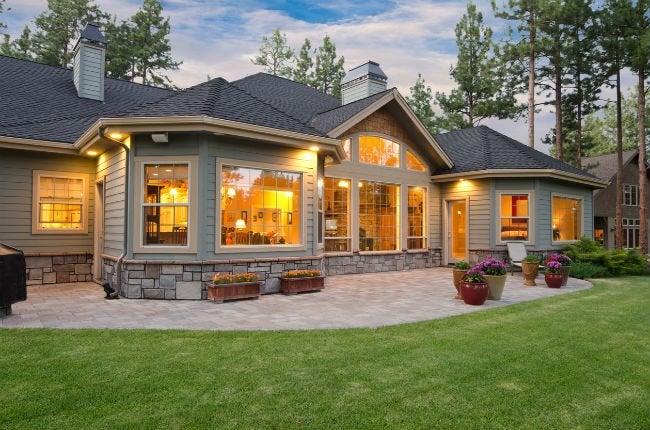
Homeowners who are considering replacement windows have more choices in materials, finishes, and styles today than ever before to get a look that they love. While in the past most homes in the United States were constructed with wooden windows—and older homes can still be found with these charming if inefficient features—vinyl and aluminum windows have become the more popular choices for new installations and replacements. Both aluminum and vinyl are typically more durable, lower-maintenance, and less expensive than wood, but each material has its own plusses and minuses.
If you’re choosing between vinyl and aluminum windows, you know this decision is not one that can be solved with a coin toss, either. New windows are a fairly pricey proposition, ranging from a low of about $375 up to more than $1,500 per window, according to industry estimates. Contractor referral website Angie’s List says that members report paying an average of $729 per replacement window, including installation. Add that up for every window in your home, and you could pay anywhere from $8,000 to $24,000—a lot of money on the line. You’re not just looking for one that fits the budget, but also evaluating what fits the bill for durability, maintenance, insulation, and more.
To help shine a light on the right choice, we’ve laid out the seven big differences between these two popular types of windows. Keep reading for key considerations in the decision of vinyl vs aluminum windows.
Vinyl frames are more traditional in appearance than aluminum frames.
When considering style, vinyl and aluminum windows hit many of the same notes: Both are readily available as single- or double-hung, single- or multi-pane, and nearly any color or finish you could desire, depending on the manufacturer. That said, vinyl window frames are typically thicker than aluminum frames and offer options of smooth, textured, or faux wood finishes. In fact, the wood-grain texture achievable with vinyl windows is a big plus for homeowners who like the look of wood but long for the durability of newer materials.
With aluminum frames, a wood look would be a mere coating essentially painted on and therefore does not typically appear quite so realistic. Thinner aluminum frames are typically finished in a smooth or textured powder-coated enamel for an ultimately sleeker, modern appearance that is more conducive to fitting in with contemporary architectural styles.
Aluminum frames are more prone to dents, corrosion, and fading.
Both types of windows are very resistant to scratching, cracking, and marring. Vinyl windows, however, boast extra durability when it comes to dents and chips, too. In the rare circumstances that your frames were to be damaged, vinyl frames—which are constructed of the same material all the way through—would be less likely to show any chips or scratches than aluminum frames, where any damage to the finish will expose the raw metal underneath.
Aluminum can also face challenges of corrosion and color change. Over time, the steel or zinc fasteners used for aluminum windows will corrode and pit, especially in environments like coastal towns with salty air. The enamel finish on aluminum windows is more subject to fading in strong sunlight than the dyes used in vinyl construction.
…but aluminum frames are stronger overall.
If a home has extremely large windows, aluminum frames are generally used. Their strength and structural integrity make them ideal for handling the larger sizes. This strength also translates to a higher degree of impact resistance—key for homeowners who live in the path of frequent hurricanes. While there are impact-resistant vinyl windows available, these typically cost 20 to 30 percent more than impact-resistant aluminum windows.